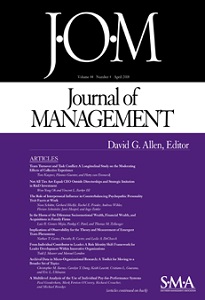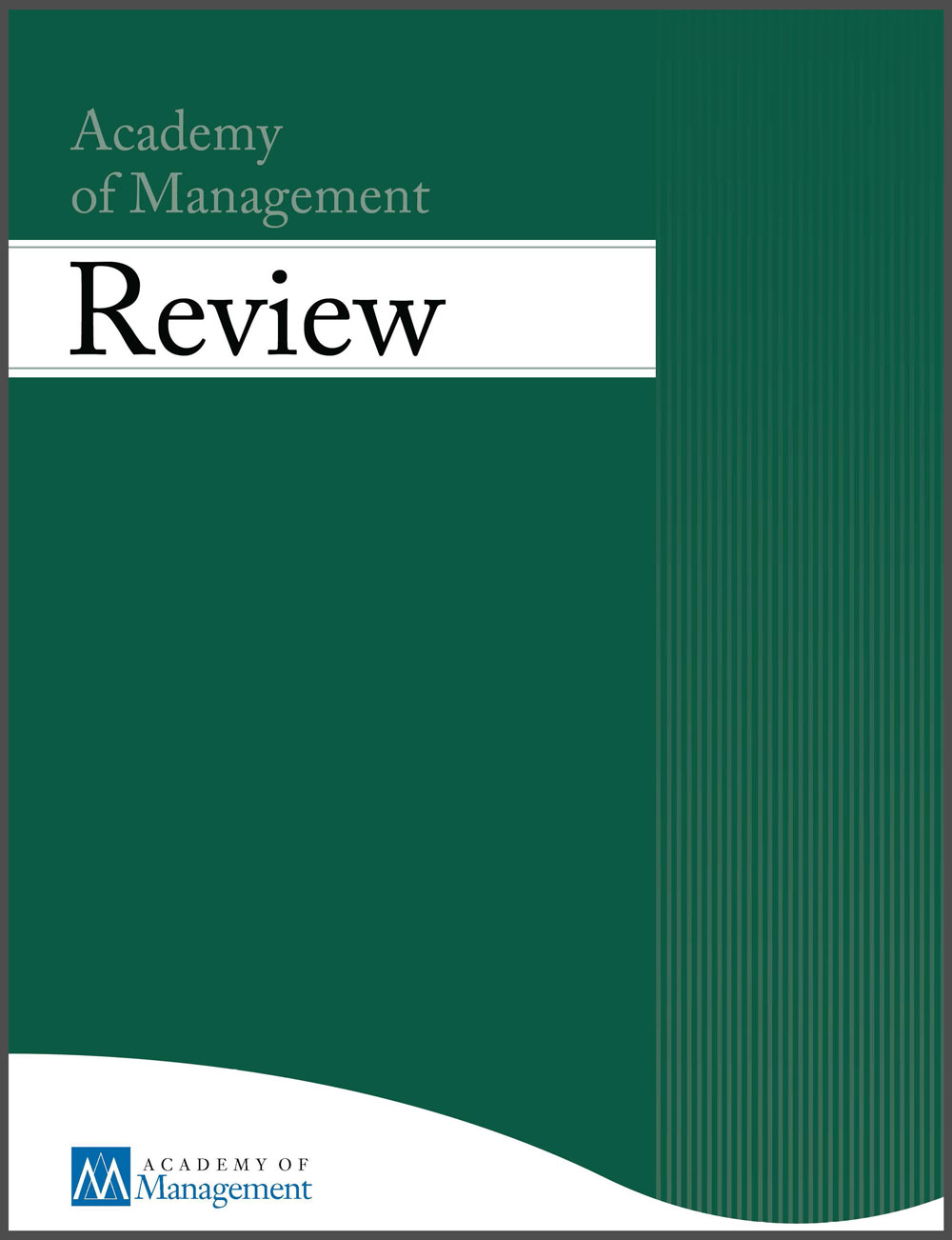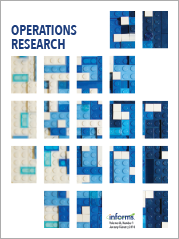Academic articles
Practitioner articles
Working papers
Books
Book chapters
Case studies
Other publications
Subject(s)
Strategy and general management; Technology, R&D management
Keyword(s)
Learning-by-hiring, inter-firm mobility, innovation, patents
Research has shown that hiring R&D scientists from competitors fosters organizational learning. We examine whether hiring scientists who have many collaborative ties with the hiring firm prior to the mobility event produces different learning outcomes than hiring scientists who have few or no such ties. We theorize that prior ties reduce explorative learning and increase exploitative learning. From our arguments we also derive other testable implications. Namely, we posit that prior ties lead the hiring firm to focus on that part of a new hire’s knowledge with which they are already familiar and that they help appropriate the new hire’s newly generated knowledge. At the same time, prior ties induce new hires to search locally within the hiring firm’s knowledge base and also to produce more incremental, lower-impact innovations. Using data on R&D scientists’ mobility in the Electronics and Electrical Goods industry, we find broad support for our hypotheses. Our results extend our theoretical understanding of learning-by-hiring processes and bear practical managerial implications.
With permission of SAGE Publishing
Volume
46
Journal Pages
287–320
Subject(s)
Economics, politics and business environment
Keyword(s)
Default options, online platforms, charitable giving, field experiment
JEL Code(s)
D03, D01, D64, C93
Volume
101
Journal Pages
808–826
Subject(s)
Management sciences, decision sciences and quantitative methods
Keyword(s)
Capacity investment, optimal contracts, capital diversion, financial constraints, newsvendor model, moral hazard
We study a firm's capacity choice under demand uncertainty given it must finance this investment externally.
Sharing profits with investors causes governance problems affecting both capacity and demand: the firm may “steal" capital, which reduces effective capacity, and \shirk" on market-development, which reduces demand. We adopt an optimal contracting approach whereby the firm optimizes among feasible financial claims derived endogenously. We characterize its optimal financing and capacity choices. First, debt financing is optimal: it minimizes the incentives to both divert and shirk. Second, the firm underinvests (overinvests) if the effort problem is mild (severe) enough relative to the diversion problem. Thus, a worsening of the same governance problem can lead to over- or underinvestment depending on circumstances. Third, we find that the diversion and shirking problems interact in their impact on capacity investment. In particular, if the shirking problem is mild enough, the more severe the diversion problem, the less the firm invests. However, if the shirking problem is severe enough, the effect of diversion is reversed: the more severe the diversion problem, the more the firm invests.
Sharing profits with investors causes governance problems affecting both capacity and demand: the firm may “steal" capital, which reduces effective capacity, and \shirk" on market-development, which reduces demand. We adopt an optimal contracting approach whereby the firm optimizes among feasible financial claims derived endogenously. We characterize its optimal financing and capacity choices. First, debt financing is optimal: it minimizes the incentives to both divert and shirk. Second, the firm underinvests (overinvests) if the effort problem is mild (severe) enough relative to the diversion problem. Thus, a worsening of the same governance problem can lead to over- or underinvestment depending on circumstances. Third, we find that the diversion and shirking problems interact in their impact on capacity investment. In particular, if the shirking problem is mild enough, the more severe the diversion problem, the less the firm invests. However, if the shirking problem is severe enough, the effect of diversion is reversed: the more severe the diversion problem, the more the firm invests.
Copyright © 2019, INFORMS
Volume
65
Journal Pages
4951–5448
ISSN (Online)
1526-5501
ISSN (Print)
0025–1909
Subject(s)
Economics, politics and business environment; Information technology and systems; Technology, R&D management
Keyword(s)
Telecom mergers, static and dynamic efficiency, difference-in-difference
JEL Code(s)
L22, O33, G34, L96
This paper studies five mergers in the European wireless telecommunication industry and analyzes their impact on prices and capital expenditures of both merging carriers and their rivals. We find substantial heterogeneity in the relationship between increases in concentration and carriers’ prices. The specifics of each merger case clearly matter. Moreover, we find a positive correlation between the price and the investment effects; when the prices after merger increase (decrease), the investments increase (decrease) too. Thus, we document a trade-off between static and dynamic efficiencies of mergers.
Copyright © 2019, The Author(s)
Volume
55
Journal Pages
375–402
Subject(s)
Strategy and general management
Keyword(s)
Luck, biases, regression to the mean, strategic factor market, strategic opportunities, behavioral barriers
How performance is perceived and attributed has important implications for strategizing. Much research in the cognitive and social sciences suggests that people tend to mistake luck for skill in evaluations and ignore how future performances regress to the mean. We argue that these systematic mistakes can be translated into an alternative source of profit: informed strategists can take advantage of others’ misattributions of luck by exploiting the false expectations and mispricing in strategic factor markets. We also discuss the learning and interdependency barriers that protect, and thus predict the attractiveness of, a behavioral opportunity and suggest approaches to help overcome these behavioral barriers.
With permission of the Academy of Management
Volume
44
Journal Pages
896–915
ISSN (Online)
1930-3807
ISSN (Print)
0363-7425
Keyword(s)
Inter-organizational collaboration, crowdsourcing, innovation, interdependence, search, organization
Volume
64
Journal Pages
239–270
ISSN (Online)
978-1-78756-591-3
ISSN (Print)
978-1-78756-592-0
Subject(s)
Management sciences, decision sciences and quantitative methods; Product and operations management
Keyword(s)
Dynamic mechanism design, social efficiency, multi-agent games, resource allocation without money
We consider a principal repeatedly allocating a single resource in each period to one of multiple agents, whose values are private, without relying on monetary payments over an infinite horizon with discounting. We design a dynamic mechanism without monetary transfers, which induces agents to report their values truthfully in each period via promises/threats of future favorable/unfavorable allocations. We show that our mechanism asymptotically achieves the first-best efficient allocation (the welfare-maximizing allocation as if values are public) as agents become more patient and provide sharp characterizations of convergence rates to first best as a function of the discount factor. In particular, in the case of two agents we prove that the convergence rate of our mechanism is optimal, i.e., no other mechanism can converge faster to first best.
Copyright © 2019, INFORMS
Volume
67
Journal Pages
ii–iv, 1209–1502
Subject(s)
Marketing
Keyword(s)
Luxury, advertising, branding, culture, storytelling, communication, marketing
Advertising is central to creating brand meaning by endowing brands with symbolic values and embedding them within their broader sociocultural context. This study analyzes how the symbolic meaning of luxury brands is constructed in print advertisements. In particular, the study shows how brand communications of luxury brands systematically differ from those of premium and mass-market brands. Through a comparative analysis of thematic and formal characteristics of 208 print advertising campaigns consisting of about 1,700 individual ads from the primary advertising campaigns of four luxury brands, four premium brands, and four mass-market brands, this study identifies three distinguishing factors of luxury brand communication: enrichment, distancing, and abstraction. First, luxury brand advertising enriches the communication content by using more complex campaign templates that make more frequent use of symbolism, rhetorical structures, and storytelling. Second, luxury brand advertising systematically uses distancing techniques, such as temporal, spatial, social, and hypothetical distancing. Third, luxury brand ads use higher-level discourses that allow for different interpretations of brand advertisements. Therefore, this study provides insights into the construction of brand identity in the luxury field, as well as the broader sociocultural construction of luxury and the evolution of its core symbolic constituencies.
Volume
48
Journal Pages
401–414
ISSN (Online)
1557-7805
ISSN (Print)
0091-3367
Subject(s)
Entrepreneurship; Finance, accounting and corporate governance; Human resources management/organizational behavior; Strategy and general management
Keyword(s)
Family business, rational choice, equity, need for control
Prior research has argued that family firms are reluctant to consider external equity as a source of financing because they fear a loss of control, which would limit their socioemotional wealth. However, prior empirical research has neglected potential contingencies that determine whether family firms’ need for control affects their equity financing decisions. The purpose of this paper is to provide first insight into this research void.
The paper builds on rational choice theory and a logit regression using secondary data.
The study shows that the effect of family firm owners’ need for control on their consideration of external equity depends on the extent to which owners expect investors to interfere with management and the extent to which decision making is affected by emotions. Hereby, the present study provides evidence that family firm owners’ decisions to use external equity are more complex than previously presumed.
This study has several limitations that provide fruitful avenues for further research. Overall, the authors list and detail seven different limitations in the paper, e.g. the narrow focus on equity financing, the use of a partial model, the fact that the authors did not conceptualize differences between different types of investors (such as high net worth individuals, private equity firms and venture capital firms) in the model and further more.
The study shows that investors need to understand the complex interplay among family firms’ need for control, expected investor interference and emotional decision making, to correctly assess their chances of success when approaching family firms for equity.
Prior empirical research has neglected potential contingencies that determine whether family firms’ need for control affects their equity financing decisions. The present paper provides first insight into this research void.
The paper builds on rational choice theory and a logit regression using secondary data.
The study shows that the effect of family firm owners’ need for control on their consideration of external equity depends on the extent to which owners expect investors to interfere with management and the extent to which decision making is affected by emotions. Hereby, the present study provides evidence that family firm owners’ decisions to use external equity are more complex than previously presumed.
This study has several limitations that provide fruitful avenues for further research. Overall, the authors list and detail seven different limitations in the paper, e.g. the narrow focus on equity financing, the use of a partial model, the fact that the authors did not conceptualize differences between different types of investors (such as high net worth individuals, private equity firms and venture capital firms) in the model and further more.
The study shows that investors need to understand the complex interplay among family firms’ need for control, expected investor interference and emotional decision making, to correctly assess their chances of success when approaching family firms for equity.
Prior empirical research has neglected potential contingencies that determine whether family firms’ need for control affects their equity financing decisions. The present paper provides first insight into this research void.
With permission of Emerald
Volume
9
Journal Pages
271–296
Subject(s)
Economics, politics and business environment; Finance, accounting and corporate governance
Keyword(s)
Debt capital structure, bond debt, unconventional monetary policy, CSPP, real effects
JEL Code(s)
G01, G21, G28
We study the transmission channels from central banks’ quantitative easing programs via the banking sector when central banks start purchasing corporate bonds. We find evidence consistent with a “capital structure channel” of monetary policy. The announcement of central bank purchases reduces the bond yields of firms whose bonds are eligible for central bank purchases. These firms substitute bank term loans with bond debt, thereby relaxing banks’ lending constraints: banks with low Tier-1 ratios and high non-performing loans increase lending to private (and profitable) firms, which experience a growth in capital expenditures and sales. The credit reallocation increases banks’ risk-taking in corporate credit.
With permission of Elsevier
Volume
133
Journal Pages
357–378






